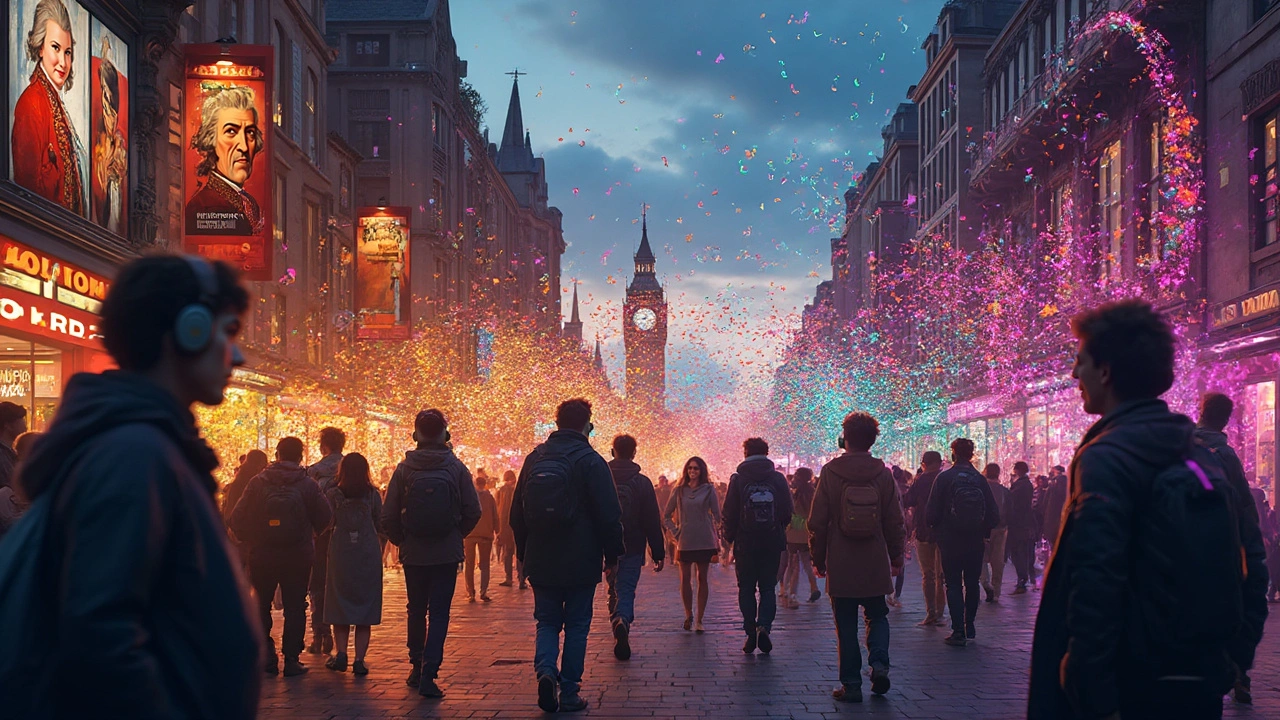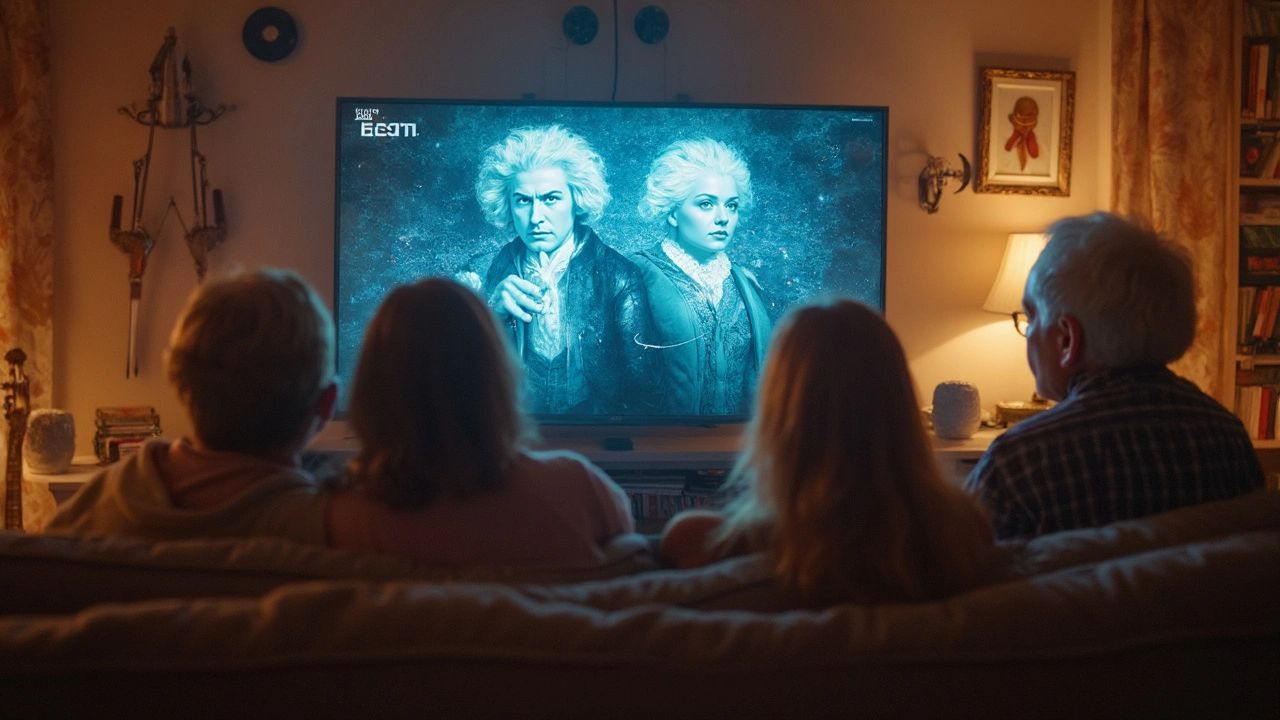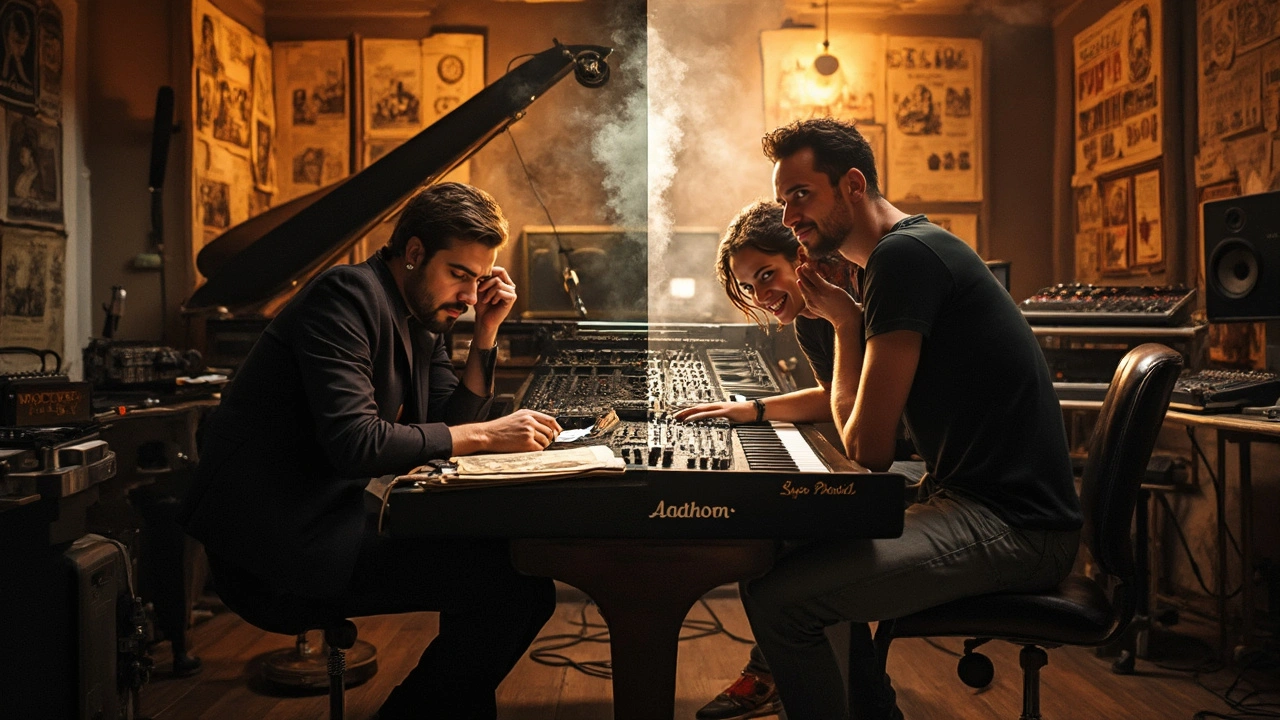Got a favorite pop song stuck in your head? There’s a good chance it borrows a few moves from classical music—even if you’ve never noticed. Don’t believe it? Remember Coldplay’s “Viva La Vida”? Its sweeping strings and chord progressions are straight out of the Baroque playbook.
Classical music isn’t just for stuffy concert halls or old-school vinyl collectors. Pop stars, hip hop producers, and film composers all swipe tricks from Bach, Beethoven, or Chopin. Sometimes you’ll hear a full-on sample, like Nas rapping over Beethoven, and sometimes it’s more about sneaky melodies or rhythms tucked behind a catchy hook.
If you want to spot these connections, start listening for dramatic strings, punchy piano runs, or haunting choir backgrounds in pop songs or movie soundtracks. These are classic signatures—literally—and they bring extra emotion and power, even if the listener has no clue about their origins.
- Classical Roots in Today’s Music
- Why Pop Producers Love Classical Tricks
- Crossover Hits: Where Old Meets New
- Classical Music in Movies and TV
- How to Spot Classical Elements in Pop Songs
Classical Roots in Today’s Music
If you crank up the radio or scroll through Spotify’s top hits, you’ll hear echoes of classical music everywhere. Billie Eilish’s “bury a friend” uses chord progressions originally made famous by Schubert and Liszt. Lady Gaga’s “Bad Romance” calls back to Bach’s style by using a fugue-like melody in the intro. Even Avicii’s chart-topping “Levels” samples Etta James, but the energy and tension in its buildup follow patterns you’ll find in Tchaikovsky’s compositions. Pop’s biggest hits don’t randomly sound dramatic or moving—often, it’s a trick borrowed from the old masters.
Drake’s hit “Nice for What” kicks off with dramatic strings, giving a shoutout to classical’s love for orchestral entrances. Alicia Keys, Bruno Mars, and Kanye West all use lush piano runs that wouldn’t be out of place in a Chopin nocturne. And when you hear those epic buildups in EDM or hip-hop, they’re usually built like a symphony—starting small, getting bigger, and slamming down with a climax.
It’s not just about melodies. Producers use techniques like layering, counterpoint, and even silence—popularized by composers like Beethoven and Debussy—to keep songs interesting. Sometimes an instrument like the harpsichord pops up, as in Rihanna’s “SOS.” Other times, artists rework a whole piece, like when Nas sampled Beethoven’s "Für Elise" for “I Can.” More than just a gimmick, these choices give tracks a weight and style you don’t always get from basic pop chord progressions.
| Modern Song | Classical Influence | Original Composer |
|---|---|---|
| Coldplay - Viva La Vida | String orchestration, chord patterns | Bach |
| Lizzo - Cuz I Love You | Vocal runs, dramatic tempo shifts | Puccini |
| Alicia Keys - Fallin’ | Blues-based piano, layered harmony | Chopin |
| Nas - I Can | Direct sample of “Für Elise” | Beethoven |
| Billy Joel - This Night | Melody lifted from “Pathetique” Sonata | Beethoven |
If you want to train your ear, try comparing pop songs side by side with the classical tunes they borrow from. You’ll start noticing old tricks hiding in fresh beats.
Why Pop Producers Love Classical Tricks
Ever noticed how some pop tracks just sound bigger, richer, or hit harder than others? Pop producers have a not-so-secret weapon: classical music techniques. They grab stuff that’s worked for centuries and repackage it for today’s charts. You don’t need to be a music theory genius to realize the difference, but even the pros admit it—classical ideas make hits stick.
Let’s get real. The chord progressions you hear in everything from “Bad Guy” by Billie Eilish to Lady Gaga’s ballads are often borrowed from composers like Bach, Chopin, or Mozart. Why? These patterns sound satisfying to the brain. The famous I–V–vi–IV progression pops up everywhere, and it’s a trick that classical composers leaned on before anyone had heard a guitar solo.
How about drama? Strings and choirs in songs like Kanye West’s “Power” or Clean Bandit’s “Rather Be” can stir up real chills. Film composer Hans Zimmer once told an interviewer he started every movie score by thinking about Beethoven—not pop playlists. That’s because classical arrangements deliver epic emotion without saying a word.
Check out this table showing some modern pop hits that rely heavily on classical techniques or samples:
| Pop Song | Classical Element | Original Composer |
|---|---|---|
| "Viva La Vida" - Coldplay | Baroque-style strings & chord progressions | Inspired by Handel/Bach |
| "I'll C U When U Get There" - Coolio | Direct sample of "Canon in D" | Pachelbel |
| "A Fifth of Beethoven" - Walter Murphy | Mashup of classical theme with disco | Beethoven |
| "Gangsta's Paradise" - Coolio | Choir style inspired by classical gospel | Bach influences |
Why do producers reach for these tools? They boost the drama, get stuck in your head, and set a song apart. Plus, bringing in classical music elements offers instant credibility—your music sounds timeless, even when it’s a club banger.
If you’re making music or just want to spot this stuff faster, listen for these classical tricks:
- Layered string sections for extra emotion
- Unexpected chord changes that give a song a fresh twist
- Choir or orchestral samples for an epic feel
- Borrowing famous melodies (sometimes hiding in the background)
No need to overthink it. Pop producers steal from the best because, honestly, the best tunes haven’t gone out of style since Mozart’s day.

Crossover Hits: Where Old Meets New
Some of the coolest moments in classical music history actually happen on the pop charts. You’d be surprised how many big hits are built from classical tunes. Take the 1976 disco track “A Fifth of Beethoven” by Walter Murphy—he mashed up Beethoven’s famous Fifth Symphony with a dance groove, and it shot to the top of the Billboard Hot 100. And it didn’t stop there. Ava Max’s “So Am I” samples the melody from Beethoven’s “Fur Elise,” turning a timeless piano riff into a radio-friendly anthem.
It goes both ways too. Crossover albums like “Hooked on Classics” in the 1980s put orchestras to work remixing chart-toppers—and made classical cool for casual listeners. Even Queen’s “Bohemian Rhapsody” takes drama and structure straight from opera. The line between genres barely exists when artists get creative with what’s come before.
Hip hop doesn’t shy away either. Jay-Z’s “Blueprint 2” samples The Alan Parsons Project’s “Snake Eyes,” which itself was inspired by classical patterns. In recent years, Kendrick Lamar teamed with violinist Lindsey Stirling for a fusion performance, and Clean Bandit built their breakout track “Rather Be” around a string quartet backing, fusing electronic beats with baroque energy. There’s endless room for blending if you’re willing to play around.
As music historian Alex Ross puts it in The New Yorker:
“When composers and producers break down the wall between classical and pop, they get a sound that’s both fresh and familiar—instantly catchy, but deep enough to last.”
If you want to dig into more crossover gems, check out playlists labeled “Symphonic Pop” or “Classical Crossover” on Spotify or Apple Music. There’s plenty to discover, and after a while, you’ll start picking out those old-school signatures in all sorts of new tracks.
Classical Music in Movies and TV
Ever watched a tense movie scene and felt your heart pounding thanks to the music? Odds are, you were listening to a piece of classical music. Filmmakers lean on these old tunes for a reason—they work. Think of "2001: A Space Odyssey." Those opening moments with Strauss’s “Also sprach Zarathustra”? Instantly epic. Or take "The King’s Speech"—Beethoven’s Symphony No. 7 is the emotional knockout punch.
TV shows play the same game. Netflix’s "Bridgerton" goes all-in, dropping string quartet covers of pop hits, but the real nod is how the drama and elegance borrow straight from the original classical music world. Even "The Simpsons" needs that punchy Mozart or Beethoven to set a mood or sell a joke.
Even if you’re not a classical fan, you’ve heard it in Hollywood blockbusters, dramatic TV soundtracks, and even cartoons. Studios love these pieces because they’re in the public domain—free to use, no expensive licensing.
Here’s a quick look at some iconic classical moments in film and TV:
- "Fantasia" (Disney, 1940): The whole film is a love letter to classical tunes, pairing Mickey and friends with Bach, Tchaikovsky, and others.
- "Die Hard" (1988): Beethoven’s Ninth cranks up the villain factor during key scenes.
- "Squid Game" (Netflix): Haydn’s "Trumpet Concerto" snaps everyone to attention before the chaos.
- "Mr. Robot" (USA Network): Regular drops of Schubert and Chopin signal mood shifts and twisty stories.
Check this out: a lot of the most-used classical tracks actually chart in the streaming era, riding the wave from big movies and TV moments. Here’s a quick data snapshot:
| Classical Piece | Most Famous Usage | Spotify Streams (Millions) |
|---|---|---|
| Beethoven’s “Für Elise” | Various ads, films, phones | 94 |
| Rossini’s “William Tell Overture” | "The Lone Ranger" theme | 30 |
| Barber’s “Adagio for Strings” | "Platoon," TV tributes | 56 |
| Orff’s “O Fortuna” | "Excalibur," trailers | 40 |
Next time a scene makes your hair stand up, look it up—chances are it’s a classical track, and now you know why it just works.

How to Spot Classical Elements in Pop Songs
It’s not that hard to catch classical music hiding in today’s biggest hits once you know what to watch for. You don’t need a music degree—just a bit of curiosity and a good ear. Here’s what you should listen out for when you want to spot where classical music sneaks into pop songs.
- String Sections: If you hear a lush string sound, like violins or cellos, especially swelling during the chorus, there’s a solid chance the track borrows from the classical world. For example, Lady Gaga’s “Alejandro” uses dramatic strings that feel almost cinematic.
- Piano Riffs: A rapid-fire piano melody—think Alicia Keys or Sam Smith—often points back to roots in Chopin or Beethoven. Sometimes it’s even based on a piece note-for-note, like Billy Joel’s “This Night” riffing on Beethoven’s "Pathétique" Sonata.
- Orchestral Swells: Ever notice a pop song explode with background orchestra before a drop? That’s pure classical drama. Kanye West’s “Power” loops King Crimson but layers orchestral hits for major impact.
- Complex Chord Progressions: Most pop relies on simple chords, but if you notice weird, beautiful changes—like in Radiohead’s “Exit Music (For a Film)”—it’s inspired by classical moves that add emotion and tension.
- Borrowed Melodies: Some songs totally lift melodies. Eric Carmen’s “All by Myself” swipes Rachmaninoff, and Janelle Monáe’s “Say You’ll Go” samples Debussy’s "Clair de Lune." Pretty bold and hard to miss!
If you’re a numbers geek, check this out:
| Pop Song | Classical Source | Year |
|---|---|---|
| Billy Joel – “This Night” | Beethoven’s “Pathétique” Sonata | 1983 |
| Eric Carmen – “All by Myself” | Rachmaninoff’s Piano Concerto No. 2 | 1975 |
| Nas – “I Can” | Beethoven’s "Für Elise" | 2003 |
| Clean Bandit – “Rather Be” | Baroque-style strings | 2014 |
| Beyoncé – “Ave Maria” | Bach/Gounod “Ave Maria” | 2008 |
If you want to go deeper, try listening to the original classical piece side by side with the pop song. Sometimes it’s a note-for-note sample. Other times, it’s just the style that’s borrowed—like lush harmonies or quick-moving melodies. You’ll start to recognize these patterns after a while, and it gives a whole new vibe to the music you already love.

